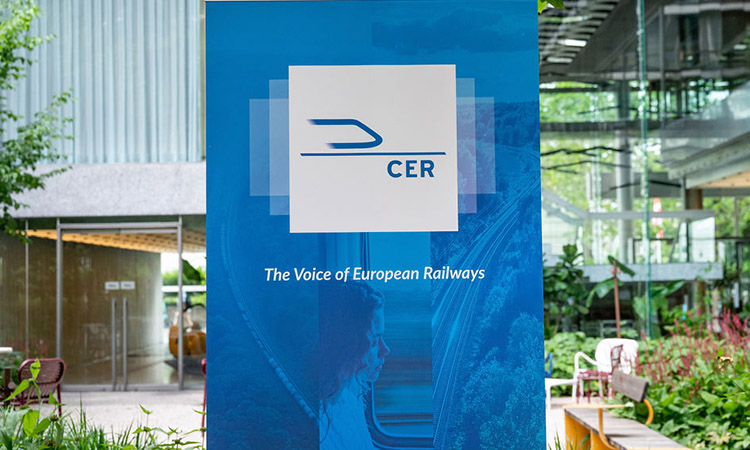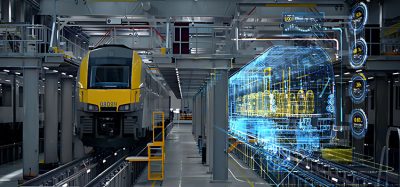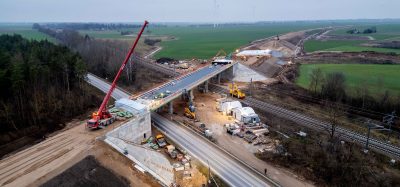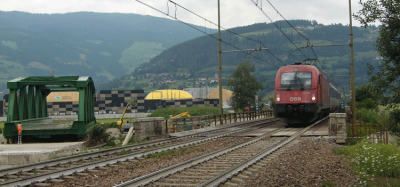CER welcome new Greening Freight Transport despite reservations
Posted: 12 July 2023 | Elliot Robinson (Editorial Assistant - Global Railway Review) | No comments yet
CER have welcomed the opportunities the Greening Freight Transport Package offers for rail, while also warning of the risk to modal shift.


Credit: CER
Three legislative proposals, each with a specific impact on the rail sector, have been published by the European Commission as part of the Greening Freight Transport Package: a Regulation on the use of railway infrastructure capacity, the ‘CountEmissions EU’ Regulation on transport-related carbon footprint reporting, and an amendment to the Directive on weights and dimensions of road vehicles. The Community of European Railway and Infrastructure Companies (CER) has expressed its pleasure at seeing these critical issues being brought to the European Union (EU) policymaking agenda with the potential to address serious everyday challenges to rail’s competitiveness. However, CER has grave concerns that allowing longer and heavier road vehicles will have the unintended effect of reversing the modal shift so badly needed to achieve the ambitious objectives of the EU’s Sustainable and Smart Mobility Strategy. It is paramount to keep these Green Deal targets firmly at the centre of the legislative work that will now begin.
The Regulation on the use of railway infrastructure capacity in the single European railway area is a timely piece of legislation long-advocated by the railway sector, who lacked the freedom under the current overly rigid legal framework to tackle the challenges of capacity coordination between neighbouring countries and beyond. CER therefore welcomes this proposal and supports the legal backbone of Timetabling Capacity Redesign for Smart Capacity Management (TTR). This will provide the grounds for an efficient and optimal capacity management – paving the way to digital capacity management – and will address the current lack of harmonisation, synchronisation and coordination of the capacity allocation processes in the EU. As part of TTR, the sector appreciates to see the rolling-planning concept in the Regulation, a crucial concept to maintain flexibility in capacity requests and ensure that new capacity allocation and management fits the market needs. Infrastructure Managers will continue the close cooperation within a renewed European Network of Infrastructure Managers (‘ENIM’) to make optimum effective use of the available rail infrastructure capacity and jointly develop a European framework for capacity management and for coordination of traffic/crisis management. CER also welcomes the inclusion in the Regulation of aligned and reciprocal principles for Commercial Conditions for train path requests. This way a more efficient use of the available infrastructure will be incentivised, avoiding lost capacity and providing maximum stability and reliability of planning.
Related content you will enjoy:
CER responds to European Parliament vote on TEN-T regulation
CER welcomes implementation of new Rail Passenger Rights Regulation
With the new legislation on capacity, the sector expects positive effects on long-term scheduling for passenger services and more flexibility on short-term capacity allocation for freight services. The first concrete results could already be delivered by 2025, which is why CER calls on legislators to fast track the proposal.
CountEmissions EU is the proposal for a Regulation establishing a harmonised EU framework for accounting of greenhouse gas emissions (GHG) of transport services. Having a common methodology to calculate GHG emissions from transport when applied to all transport modes will equip transport users to make better informed choices and contribute to the modal shift to clean mobility, particularly if it is further developed into a carbon labelling system. CER welcomes the adoption by the Commission of the well-to-wheel approach when accounting GHG emissions and sees scope to later extend the initiative to other externalities for fuller alignment with the polluter-pays principle. In this regard, energy efficiency is an important criteria since in the long run all modes will become less carbon-intensive. The methodology needs to be consistent with the existing international standards, a very relevant point for the global freight market but also for passengers. CountEmissions EU is necessary to avoid greenwashing practices in transport but it is equally important to make sure that the methodology is widely used. CER underlines that the initiative should serve as the basis for a fully-fledged carbon labelling scheme for transport services, similar to other popular labelling schemes in industries such as energy or food. This will be key to compare transport modes and intermodal journeys and incentivise the most sustainable options.
The positive modal shift impact of these two proposals can be jeopardised however by the proposal for a revised Directive on weights and dimensions of road vehicles. CER particularly regrets the decision not to address this issue in conjunction with the revision of the Combined Transport Directive. Both legislations should be considered in parallel and have the overall effect of increasing rail-road compatibility for intermodal operations, whereas allowing longer and heavier road vehicles on cross-border routes presents a serious risk of negatively impacting on rail freight transport (both Single Wagonload and Combined Transport) and triggering a reverse modal shift.
“These proposals are a welcome instalment of the EU’s Greening Freight Transport package, complementing measures foreseen in the TEN-T Regulation,” Alberto Mazzola, CER Executive Director, said. “There is now real potential to accelerate modal shift. I therefore urge policymakers to expedite the legislative process on these files in view of quick results. At the same time, we should not run the risk of reverse modal shift on the weights and dimensions file. European railways are ready to cooperate to make this Package a success and are hopeful that legislators will not lose sight of the ultimate Green Deal goals at stake.”
Related topics
Related organisations
Community of European Railway and Infrastructure Companies (CER), European Union (EU)








